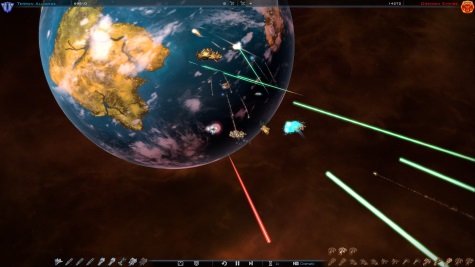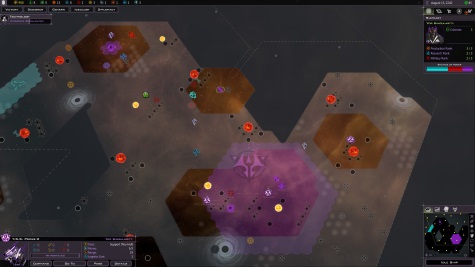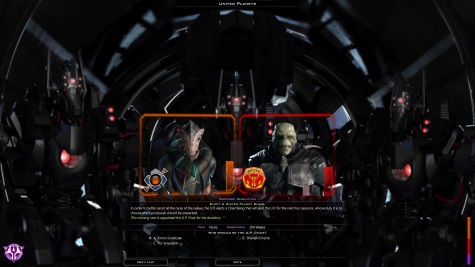I was interested in this series long, long ago, beginning with the second one if I recall correctly because of what I heard about the quality of the AI players. For various reasons I never got around to playing it and recently Stardock’s position on the Gamergate affair soured me on all of their products. I didn’t buy this copy of the game either. It was a gift from a Broken Forum member so I felt that I had to at least give it a decent shake.
Naturally as this is a relatively complex strategy game I made sure to both read the manual and go through the tutorial. Unfortunately they turned out to be not very helpful. They’re okay at teaching the user interface but give almost no information about the mechanics. Part of this is because the mechanics seem to have been greatly revised since the original release due to patches and expansions. But basic stuff like what strategic resources are for or how trade routes are created are never mentioned. The user submitted guides on Steam were more helpful and many of these aren’t up to date either. I had a lot of trouble even completing the tutorial and judging by comments on the Steam discussion boards, I’m not alone. This made me very disinclined to like this game.
Eventually after a lot of experimentation, I think I’ve figured out the mechanics and I can’t say that I like them. Pretty much all of the space strategy games I’ve played use a three-dimensional map with star systems being the distinct nodes where interesting things like planets and ships are located. This game uses a two-dimensional hex map so it’s more like a land-based strategy game with planets, stars and ships being placed on hexes. That’s not necessarily bad, just different from other space games. In particular it takes away natural choke-points since ships can go anywhere and are restricted to travelling along jump points or whatever. I think I still prefer the usual way space strategy games do it however.
What I do hate with a passion is how fiddly it is and how it actively punishes new players. For example the way it funnels resources between civil production and military production means that planets that aren’t sponsoring a shipyard but do have some production allocated to military are simply wasting resources and the game doesn’t tell the player that this is going on. Starbases are a hugely important component. One popular strategy is to bracket an important world with multiple economic starbases but you need a very particular placement pattern to give the planet the best possible coverage. It’s such a silly mini-game and starbases are stupidly strong. Building one costs only a measly constructor ship and no fleet will be able to destroy one until much later in the game. Then there’s how every game each player starts with a fairly large amount of money. This is hardcoded and can’t be changed. Apparently a key component of your opening set of moves is to decide exactly how to spend that pot of cash and this can easily determine who wins the game. I really don’t like these mechanics.
Each game also seems to be supposed to proceed along specific phases. So the beginning is a mad rush to colonize planets and no factions ever go to war during this period, not even the most militaristic ones. The only action you’ll see is against static defenders at ship graveyards or the very occasional space pirates. It feels kind of boring to me how you can safely explore and build up during this period and no one ever declares war on you. The AI seems fairly competent and I admit that I dislike this game so I never had the patience to get really good at it. But I’ve found that it is possible to gain an advantage over the AI by doing unintuitive things can feel sort of exploitative, such as packing a cargo hull full of sensors to create a super probe to quickly find the best colonizable worlds.
Obviously this game isn’t altogether bad as it has its share of fans. Perhaps I may even like it eventually after putting enough time in it. There are a lot of interesting things that you can do in combat for example as they’re fully simulated even if you don’t have control over the ships. I’d note however that there are still things I don’t understand even after actively trying to seek out information on it. For example, the robotic Yor build new population instead of growing naturally. The tooltip suggests that there is Durantium cost for doing that, a kind of strategic resource, but I don’t understand how that is calculated. Playing this gave me a new appreciation for the clean and clear design of the Civilization games in which everything happens in discrete and predictable steps. Here I have no idea when a planet will flip ownership due to influence. There are all kinds of barriers that makes it hard to evaluate the effects of my decisions. That’s why I’m not inclined to give it the benefit of the doubt and will be spending my time on other games.



One thought on “Galactic Civilizations 3”